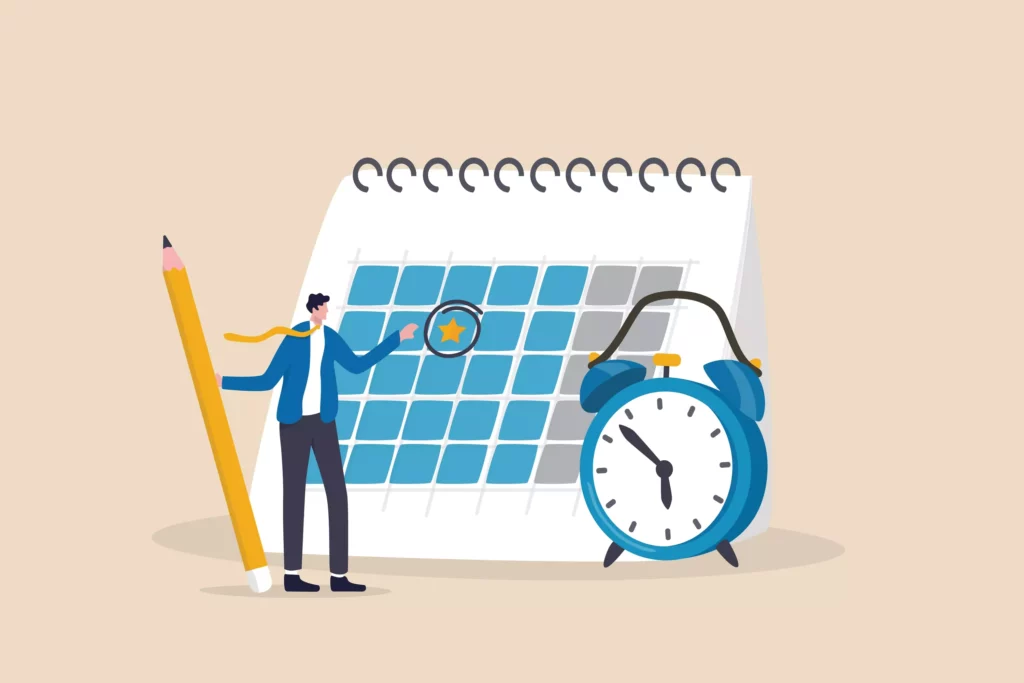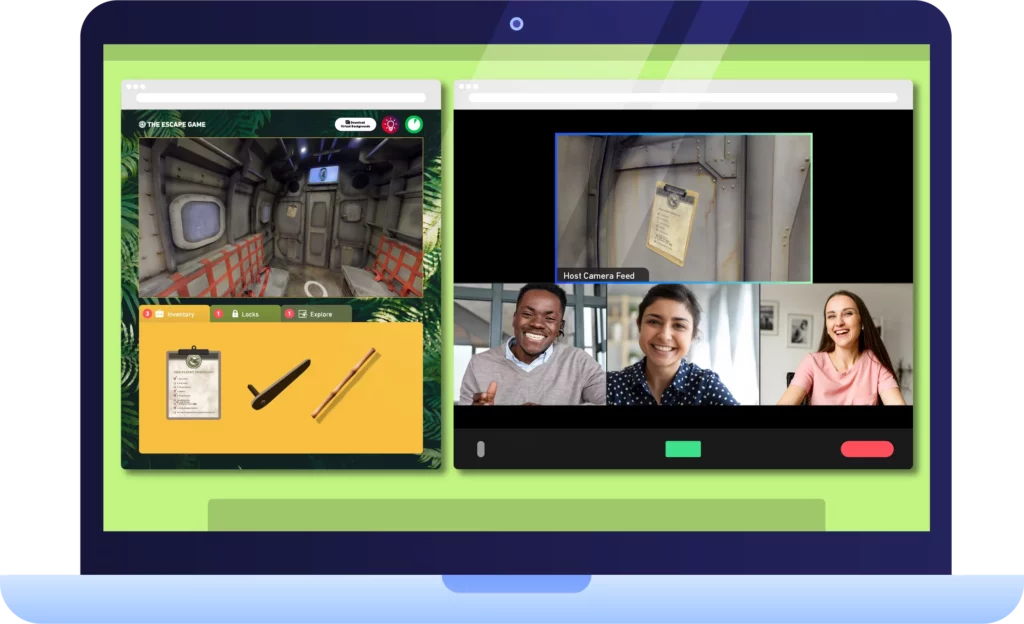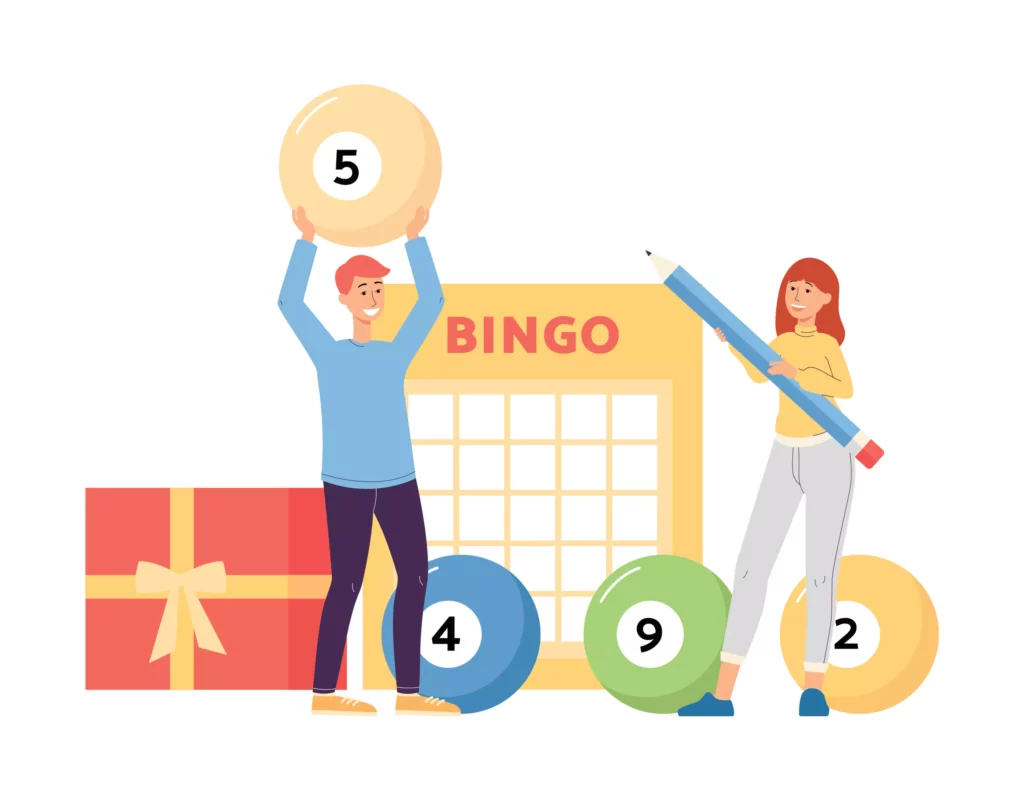Teams are made up of different people with a variety of personality types and skill sets, and that’s an advantage! If you want to help boost their collaboration skills and build real team unity on a regular basis, it’s time to use quick team building activities. Not sure what quick team building activities look like or how they can benefit your team and your company? We’ve got your answers below, so keep reading!
Table Of Contents
Why Are Team Building Activities Important?
Why Choose Quick Team Building Activities
17 Fun Quick Team Building Activities

Why are team building activities important?
Team building activities are essential for teams to develop good communication skills, build unity amongst teammates, learn problem-solving skills, and boost employee engagement. Although doing activities at work may seem like just a time-killer, team building activities intentionally enhance your employees’ overall productivity by strengthening their skills as a team and as individuals.
If you haven’t started using team building activities and games at work, you should know that your team members are probably waiting for them! Statistics show that about 75% of employees say that teamwork and collaboration are important at work. As teams grow, coworkers are able to get more and more specialized in their specific roles. If you’re part of a growing team or you want to grow your team, including team building activities will help hone your team members to work together. They’ll get an idea of how best to communicate with each other and will build relational trust in the workplace.
According to the career site Indeed, some benefits of team building include more creativity, improved morale, encouraging collaboration, and a better work environment. Because teams bring together different people with different strengths and personalities, these benefits are important in building a successful team. Team building activities are time and financial investments with a high ROI for your team and your company!

These kinds of activities can also be fun, bringing overall positivity to your workplace and improving morale. Forbes notes that when employees have fun at work, their productivity increases and their mental health improves. You can play office games, engage your employees with non-work-related topics during breaks, or even share light-hearted videos or articles with your team. Mix up your physical spaces by getting your team outside (and of course, there are plenty of indoor games when the weather doesn’t cooperate). A fun and engaging work environment keeps employees around for longer and encourages them to really care about the work they do at your company.
As you grow and develop your employees, team building activities can help you achieve your goals faster and with more results!
Why choose quick team building activities
When people think about team building activities, many times they think of a half-day activity or a full day away from the office. The good thing about team building is that it doesn’t have to take that much time to cultivate the benefits of team building! There are lots of team building activities that can give your team the benefits above in a short amount of time.

Quick activities or full-day activities?
What’s great about using quick activities or games is that you can do them more often than time-consuming activities. Whereas you may spend a portion of your budget every quarter on a big team building day (which is highly valuable!), your employees will benefit from weekly boosts of team building. It’s like giving them a weekly practice period for honing or building skills that they use on a daily basis. For instance, teams thrive with good communication skills. Quick team building activities can build communication skills on a regular basis.
When you have the opportunity to introduce team building activities over and over again, your employees begin to look forward to the activity. They’ll start to see the benefit of the activities and will remain engaged as you present each one to them. Keep an ear to the ground for feedback on the activities you choose—some might be a big hit that you’ll want to repeat, while others you might want to save for another time after you tune and refine it for your team.
When to use a quick team building activity
If you look at your team’s schedule and think, “There’s no way we can fit in an activity this week, next week, or this quarter,” have no fear! Time constraints shouldn’t stop you from team building. There are quick team building activities that range from five minutes to half an hour, and, again, think of these activities as an investment in your team.

Add on a quick team building activity to the beginning of a team meeting or to start your week off as you prep your team in a Monday meeting. Will a ten-minute activity at the start of a meeting derail it? Probably not—in fact, it will probably help your meeting run smoother! Using activities to start meetings helps teammates be more open to discussion and creates trust on the front-end.
You can also do an activity at the end of the week as a wrap-up. At the end of the week, your employees might feel a little drained, so adding in a quick activity at an end-of-the-week meeting can give them a boost of energy.
Additionally, if you’re onboarding new hires and want to build bridges between them and your existing team, quick team building activities work great when sprinkled into those “meet and greet” meetings. Use them at team mixers as an introduction, or even use them as raffles during team happy hours. When you bring an element of fun into these activities, they’ll feel less like “work” and more like genuine engagement!
Quick team building activities are perfect for both remote teams and in-person teams. If you manage a mainly remote team, be sure to check out our resources of virtual team building for a boost in your employees!

17 Fun Quick Team Building Activities
Ready to start using some fun quick team building activities? Check out our list below of seventeen of our favorite activities! Some of these activities and games end with a team or an individual as a winner. Be sure to have a unique prize for them to properly congratulate their victory!
1. Coworker Bingo
Time: 2–5 minutes
Number of People: At least 6
Benefits: Builds relationship
Things Needed to Play: Pre-made bingo sheet
How to Play: Come up with a bingo sheet that has different common experiences or traits on them (i.e., “Has been to Europe,” “Is left-handed,” “Has a master’s degree”). Give your team a short amount of time to go around the room and fill up their bingo sheet by asking their coworkers if they fit any of the boxes.

2. Pictionary Chain
Time: 10 minutes
Number of People: 4–10 people
Benefits: Develops communication, boosts creativity
Things Needed to Play: Index cards, pens
How to Play: Sit employees in a row or circle and give the first person a simple drawing prompt. They will draw that on their index card and pass it to the next person. That person must write what the picture is on their index card and pass it to the next person. Alternate between drawing and writing as the prompt moves from person to person.
3. Copycat
Time: 3–10 minutes
Number of People: 4–15 people
Benefits: Communication skills, problem-solving
Things Needed to Play: A deck of cards
How to Play: Pick out a suit from the deck of cards and have everyone draw a card from that suit. Whoever has the lowest card is the guesser and has to leave the room. Everyone draws again once the guesser leaves the room, and whoever has the highest card is the copycat. Everyone else in the room will copy what the copycat does (touches their ear, coughs, scratches their head, etc.). Invite the guesser back into the room and give them 1 minute to figure out who the copycat is.

4. Paper Plane Challenge
Time: 10 minutes
Number of People: 4–10 people
Benefits: Boosts creativity, creates camaraderie
Things Needed to Play: Paper (can bring in paper of different weights)
How to Play: Give everyone time to make a paper airplane, then have a “fly off.” Each person will give points to whose plane flies the farthest, flies for the longest time, and looks the best. The person with the most points wins.

5. Roses and Thorns
Time: 10–15 minutes
Number of People: 3–5 people
Benefits: Builds relationship, trust, positivity, and communication skills
Things Needed to Play: Nothing
How to Play: Each person has 3 minutes to share their “roses” (good things that have happened at work during the week) and their “thorns” (difficult things that have happened during the week). Set the tone in the room by limiting distractions (closed laptops, silent phones).
6. Team Trivia
Time: 20–30 minutes
Number of People: 6–20 people
Benefits: Boosts camaraderie, builds relationship
Things Needed to Play: Access to a trivia game
How to Play: Divide your team into smaller teams (at least three in each team) and have them face off in a trivia war. You can pick one specific topic for your trivia, or if you want to go the extra mile, you can create a trivia game that is centered around your workplace.

7. Team Playlist
Time: 5–10 minutes
Number of People: 2–10 people
Benefits: Builds relationship and camaraderie
Things Needed to Play: A YouTube, Spotify, or Apple Music account
How to Play: Allow team members the chance to create a music playlist together that best describes their team. Depending on how many teammates are contributing, each person can add two or three songs to the playlist.
8. Brackets
Time: 10–15 minutes
Number of People: 2–15 people
Benefits: Builds relationship, communication
Things Needed to Play: A pre-made bracket of any category. (You can make one or you can find one online. Bracket Fights.com is a good resource.)
How to Play: Choose a category with multiple choices (i.e., fast food restaurants, NBA teams, cities) and allow teammates to discuss (or fight) about which choice should move forward in the bracket.
9. Weekend in a Word
Time: 3–15 minutes (about one minute per team member)
Number of People: 2–10 people
Benefits: Build relationship, communication skills
Things Needed to Play: Nothing
How to Play: Each team member shares how their weekend was in one word. They can’t use the same word that someone else used. To spice things up, have them give their words in alphabetical order. The first person would use an adjective that starts with the letter A, the next person would use the letter B, and so on.

10. The Numbers Game
Time: 10–30 minutes
Number of People: 5–15 people
Benefits: Problem-solving, communication skills
Things Needed to Play: A piece of paper for each player with a single-digit number written on it.
How to Play: Call out large-digit numbers and give your team a time limit to get in order and create that number with their papers. For larger teams, you can repeat digits and split your group into smaller teams to create a challenge.
11. Quick Puzzle
Time: 15–30 minutes
Number of People: 4–15 people
Benefits: Communication skills, problem-solving, boosts creativity
Things Needed to Play: Children’s puzzles (100 pieces or less)
How to Play: Divide your group into small teams and give them an unsolved puzzle. The first group to finish their puzzle wins.

12. Salt and Pepper
Time: 10–30 minutes
Number of People: 6–20 (an even number works best for this game)
Benefits: Communication skills, problem-solving
Things Needed to Play: Index cards and pens
How to Play: Come up with items that come in a pair, such as salt and pepper, Sonny and Cher, or peanut butter and jelly. Write one item on each index card and tape the index cards to the players’ backs. Team members have to go around the room and ask each other questions to figure out where the other half of their pair is. As they ask people questions, they must figure out what their index card is by guessing from clues.
13. Silent Building Project
Time: 15–30 minutes
Number of People: 4–20 people
Benefits: Communication skills, creativity
Things Needed to Play: Toothpicks and tape
How to Play: Divide your group into teams. Show a picture of a famous building or site (i.e., the Leaning Tower of Pisa, the Eiffel Tower, Machu Picchu) and have each team use toothpicks and tape to recreate it. Teams are not allowed to talk as they build their building or sculpture. After each team is done, allow everyone to vote on which one looks most like the original.

14. Ice Breaker Questions
Time: 5–10 minutes
Number of People: 5–15 people
Benefits: Builds unity and communication skills
Things Needed to Play: A set of ice breaker questions (here are 160 of our favorite ones!)
How to Play: Pose an ice breaker question to the whole group, or give team members a small stack of questions to go around and ask each other. Allow time for your team to connect with one another as they learn about their teammates.
15. Pirate’s Treasure
Time: 10–15 minutes
Number of People: 5–10 people
Benefits: Builds camaraderie and problem-solving skills
Things Needed to Play: A chair, a blindfold, and a “treasure”
How to Play: Place the “treasure” (it can be any item, big or small) under the chair and choose one person to be the pirate. The pirate sits blindfolded on the chair and tries to guard the treasure without getting off the chair as other teammates try to steal it. If the pirate touches one of the “thieves,” that person is out of the game.

16. Minefield
Time: 15–30 minutes
Number of People: 4–16 people (even numbers work best for this game, but a group of three would be okay)
Benefits: Communication skills, trust building
Things Needed to Play: Blindfolds and an obstacle course. Can be played inside in a hallway or somewhere outside.
How to Play: Team members will pair up and blindfold one person in each team. Teams will face each other in a race to the end of the obstacle course. The non-blindfolded team member will guide their teammate using only words.
17. Helium Stick
Time: 10–20 minutes
Number of People: 5–10 people
Benefits: Communication skills, problem-solving
Things Needed to Play: A lightweight stick of some kind (can use the handle from a broomstick)
How to Play: Line players up in two rows facing each other and have each of them stick out their index fingers on both hands. Place the stick on their row of fingers and have them lower the stick to the ground. The catch is, everyone’s fingers must be touching the stick at all times. If someone’s finger isn’t on the stick at any point, they have to start over.

Start your activity!
Quick team building activities are beneficial for all kinds of teams, from remote teams to executive teams to newly formed teams! If you need a quick boost in productivity or in a cohesive team, add one of these games to your schedule today. Your team members will be happy to do something out of the norm, plus your company will benefit from more engaged employees who are getting better at their jobs.

